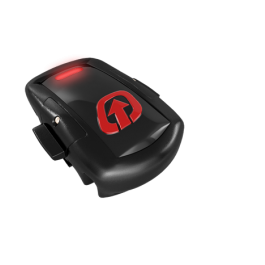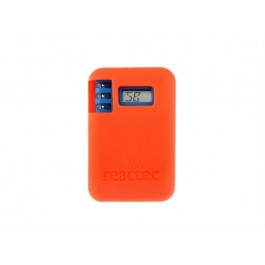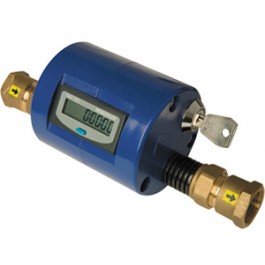How to choose the right Vibration Exposure Timer
Vibration Exposure Timers for Hand Arm Vibration Monitoring
Tool Time and a Review of Vibration Exposure Timers
Very often in this feature, we are looking into measuring the magnitude of sound or vibration in the best possible way and with the fewest errors. In this article, I am going to assume that you already have reliable numbers available. The purpose here is to simply review the products currently available for assessing tool usage time (vibration exposure time) and to uncover the methodology used.
Read on to learn about the different types of Vibration Exposure Timers, or read our article The definitive guide to managing Hand Arm Vibration in the Workplace
Vibration Tool Timer methodology
Let’s get this clear at the beginning; no vibration tool timer currently available on the market has the capability to measure vibration levels; you need to determine the magnitude separately. This can be achieved using either manufacturer’s data – providing you understand the limitations of such, website databases, peer-group sharing or your own measured levels – definitely the best way, but that’s for another day!
Most of the tool timer devices do include and accelerometer but this is simply to sense for the operation of the tool. These accelerometers are usually MEMS (chip based) and do not have the specification needed to take measurements to ISO8041:2005, nor do any of the systems report the acceleration value anyway. There are systems available that measure the vibration level over time, such as the Svantek dosemeter and the CVK glove system, but these are not in the scope of this article.
So what’s the point?
Measuring employee’s exposure time to vibration is an essential part of a vibration risk assessment, whether you do it manually with a stopwatch or automatically with a vibration tool timer. The point is that no matter how good your vibration measurements are, the final exposure number you arrive at (the A(8) – weighted eight hour acceleration value) is only ever going to be as good as your ability to measure the exposure time!
What vibration tool timers are there on the market?
Currently, to the best knowledge of the author, there are only four dedicated tool-timer products available on the market. Depending on your requirements, they offer differences in methodology, application, size, appearance and cost and all have their pros and cons!
The Curo
 The Curo is a rugged piece of equipment; easy to set-up and use, it is attached to the tool via a permanently fitted holster, which is either glued or cable-tied on. Holsters are programmed with the vibration magnitudes for the tool and each worker is allocated a Curo. The employee will then ‘clip’ the Curo onto each tool they use and is notified by a clear LED indicator at the EAV (100 points) and the ELV (400 points) – when the light goes red, work must stop! Holsters are programmed by a separate device, which comes with software and also allows for simple data transfer from the Curo to a PC, so exposure times can be logged and stored for management action and future reporting.
The Curo is a rugged piece of equipment; easy to set-up and use, it is attached to the tool via a permanently fitted holster, which is either glued or cable-tied on. Holsters are programmed with the vibration magnitudes for the tool and each worker is allocated a Curo. The employee will then ‘clip’ the Curo onto each tool they use and is notified by a clear LED indicator at the EAV (100 points) and the ELV (400 points) – when the light goes red, work must stop! Holsters are programmed by a separate device, which comes with software and also allows for simple data transfer from the Curo to a PC, so exposure times can be logged and stored for management action and future reporting.
Pros and Cons – the Curo is certainly a robust unit and collects and stores all the data required for HAVs management. The only downside is the lack of a ‘points’ display and the fact that the red LED is fixed to either 100 or 400 points. There is no charging to worry about although the battery cannot be changed so replacements will be needed after 12 to 18 months.
The HAVi
 The HAVi Vibration Tool Timer is the quickest and cheapest way to set up and go with vibration exposure measurements. There is no software to worry about with users simply entering results into a HAVi Log Book. This solution, once implemented allows workers to manage their own exposure. There is a metal cover available for added ruggedness and a Manager Pack can be purchased, which includes all the documents and information you need to comply with the Control of Vibration at Work Regulations (2005).
The HAVi Vibration Tool Timer is the quickest and cheapest way to set up and go with vibration exposure measurements. There is no software to worry about with users simply entering results into a HAVi Log Book. This solution, once implemented allows workers to manage their own exposure. There is a metal cover available for added ruggedness and a Manager Pack can be purchased, which includes all the documents and information you need to comply with the Control of Vibration at Work Regulations (2005).
Pros and Cons – The HAVi has all the information directly available on-screen and is very simple to use. It is also cost-effective although each unit will need replacing every 12 to 18 months as the battery runs out. On the negative side, the operator does have to manually enter the vibration level for each tool, but this is quickly learned.
HAVmeter
 The HAVmeter is the most advanced vibration exposure measurement system, which is reflected in the initial cost. The HAVmeters are charged in a Base Station where data is also transferred into an SD card post-measurement. The SD card is then inserted into a PC and data can be viewed with the “ToolMinder” software. ‘Tool Tags’ are Programmed and glued to each tool and employees are allocated a swipe card, which links the person with the Havmeter unit. Each card can even be programmed with a different maximum daily ‘points’ allowance.
The HAVmeter is the most advanced vibration exposure measurement system, which is reflected in the initial cost. The HAVmeters are charged in a Base Station where data is also transferred into an SD card post-measurement. The SD card is then inserted into a PC and data can be viewed with the “ToolMinder” software. ‘Tool Tags’ are Programmed and glued to each tool and employees are allocated a swipe card, which links the person with the Havmeter unit. Each card can even be programmed with a different maximum daily ‘points’ allowance.
Pros and Cons – The HAVmeter may be costly, but is the most automated system available and, once installed, will provide for the most robust reporting. The units do last longer too, with battery life of up to 5 years. The only reported downside other than the initial cost is that the HAV meter can be knocked off the tool although there is a strap available now to help with this.
Tool Timers (Pneumatic/Electric)
 The original method of counting vibration exposure time, these ‘tool timers’ plug into the power (air/electricity) supply of the tool, detecting the trigger time of the worker by measuring the time for which the supply is flowing. This method gives a good assessment of ‘trigger time’ and is also useful for tool maintenance. With no additional device attached to the tool. This is the most user friendly system available, simple to set up and use straight out of the box. Workers simply use the tools as they normally would.
The original method of counting vibration exposure time, these ‘tool timers’ plug into the power (air/electricity) supply of the tool, detecting the trigger time of the worker by measuring the time for which the supply is flowing. This method gives a good assessment of ‘trigger time’ and is also useful for tool maintenance. With no additional device attached to the tool. This is the most user friendly system available, simple to set up and use straight out of the box. Workers simply use the tools as they normally would.
Pros and Cons – These tool-timers are so easy to use and provide the information directly on the display with nothing to press – simply a key to reset the time. The obvious downside is that the time doesn’t necessarily relate directly to an employee, so you do have to know what you are measuring!
In Conclusion
There is no clear winner when comparing these vibration tool timers, although it is quite possible that each one may suit any individual application or customer more than the others. There are some factors to consider:
- Are you planning on using vibration tool timers for continuous measurements as a HAVS prevention system, or for a fixed term as part of a risk assessment?
- How many employees and tools are you looking to monitor?
- What kind of tools do you use?
- Are you interested in training workers to measure their own exposure, or would you rather keep the responsibility in the hands of managers?
-

Castle Products
CLICK HERE FOR
Information, technical data, images and pricing of all Castle Group Ltd. products -

Product Rental
CLICK HERE FOR
Hire the best equipment at a fraction of the purchase price -

Calibration Lab.
CLICK HERE FOR
Calibration and repair services from Air Samplers to Vibration Meters -

Training
CLICK HERE FOR
World class safety and environmental courses. On your site or our 4* training facility -

Consultancy
CLICK HERE FOR
Employ our expertise for both simple and more demanding issues.












